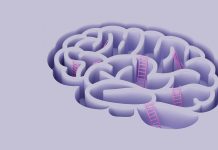The NHS is currently overwhelmed with long waiting lists of people trying to access mental health services. How could AI streamline these lists?
Amongst the great wait for mental health services in the UK – with even private clinics having waiting lists of up to six months – patients are struggling to access services while staff members are burdened with overwhelming administrative tasks.
The gap between the post-pandemic disruption and increased demand for mental health services will take a long time to fill.
Modernising communication for services with £240 million
The UK government is modernising the Mental Health Act to bring it up to date with 21st century and will invest £2.3 billion a year by March 2024 to support mental health services. Another key focus is to modernise communications technologies for GPs, NHS Trusts, hospitals, and private clinics, which will streamline services, reduce unnecessary admin burden and improve the patient and clinician experience.
They will be investing £240 million into practices across England to embrace the latest communications technologies enabling GP practices to replace their old analogue phone systems with modern systems such as cloud solutions using IP or SIP-telephony. These solutions offer easier management, cost-effectiveness, and the integration of technologies like AI and automation into mental health services.
Investing £2.3 billion by March 2024 to support mental health services
This move is very timely given that BT will stop selling ISDN and PSTN telephony from September this year, and from 2025 will cease to support these systems, so sometime soon, everyone has to update their telephony if they haven’t already.
Modernising telephony and having cloud telephony provides the flexibility for GPs, hospitals, private clinics to use the latest technologies to streamline processes, reduce waiting times, operate a triage system and introduce the ‘care navigator’ system where by the receptionists ensure that the patients are directed to the most suitable healthcare professional whether that’s an appointment with the GP on the day if urgent, or in two weeks of not, or to a pharmacy or to NHS 111.
Streamlining operations in mental health services
This will enable GP practices, hospitals, and private clinics to digitally transform their services, resulting in faster access to care for patients with mental health and other issues, ensuring they are directed to the appropriate care.
Another remit for the Government is to put an end to the mad rush for appointments at 8.00am on Monday whereby an average surgery receives over 100 calls in the first hour, and the patient is kept on hold for ages and then told there are no appointments!
The latest communications technology and telephony will modernise the way patients contact their GPs. IVRs can be added so patients get messages that ‘there are no appointments today left, please call back or press 1 if urgent’ etc.

AI therapy for common mental health problems
The NHS Improving Access to Psychological Therapies programme (IAPT – now known as NHS Talking Therapies) aims to provide talking therapies for working-age people experiencing common mental health problems such as depression and anxiety.
Aiming to treat 75% of people within 6 weeks of referral to ensure that half of those finishing treatment recover from their condition, and it aims to reach 15% of people with common mental disorders each year. People can be referred by their GP or they can self-refer.
The NHS aims to treat 75% of people within 6 weeks of referral
However, the average waiting times for first treatment varied substantially across England, again leaving many patients stuck on the list.
The use of AI and automated technology can help reduce the gap between demand for mental health services and provision, particularly for ‘talking therapy’ by using it as a virtual AI chatbot counsellor based on CBT.
Although it is certainly no replacement for a human counsellor, it could serve as ‘stop gap’ while waiting to see a human therapist and 87% of people struggling with mental health are now using apps to get help and 31% using them because they don’t want to wait for face to face support (FCC).
87% of people struggling with mental health use apps for help
There are a few well-known AI chatbot counsellors on the market today that share success in reducing low level anxiety and depression such as Woebot, Ellie and Tess that deliver highly personalised therapy based on CBT and can also interpret non-verbal signs such as facial expressions, posture or gestures.
They are affordable, accessible from everywhere, easy to open to up, and clinicians can use it to complement their work such as getting the basic data, tracking the data on the chatbot and using it to plan next session or see patterns of mood and behaviours etc.
People have been warned not to use the likes of ChatGPT for virtual therapy, as they are not designed for this purpose and to only use trusted well-known ones.
AI is working progress and the government are currently in the process of producing regulations and frameworks for AI designs and solutions to ensure they are regulated and assessed before available to the public and to ensure that there are no biases or incorrect information.
This is of course critical in the health market and particularly when used for something as sensitive and vulnerable as mental health.

Managing referrals for 1.88 million adults
The NHS Long Term Plan has increased the IAPT (Improving Access to Psychological Therapies) accessibility targets by 380,000 people meaning that by 2023/2024 1.88 million adults must be accessing IAPT services.
NHS Trusts are faced with an overwhelming number of referrals for mental treatment such as ‘talking therapy’ CBT this means that due to the heavy load of admin clinicians spend less time treating the patients therefore leading to a reduced level of service.
A chatbot can talk to the patients instantly in a friendly tone guiding them through the referral process step by step according to their personal needs, re-directing them to mental health services if required and flagging up high risk patients who need to be prioritised immediately.
The benefits are it is available 24/7, accessible at any time on any device
The benefits are it is available 24/7, accessible at any time on any device. It also augments the time of the clinician because when they are due to see the patient they already have the basic data they require.
An AI chatbot can be used to e-triage and assess what treatment is required and act as first point of contact for the patient. Digitalising processes making them easier to use and speeding up the process, reducing admin, enabling staff to focus on higher value tasks and improving the patient experience.
This piece was written and provided by Jonathan Sharp, CEO, Britannic.











